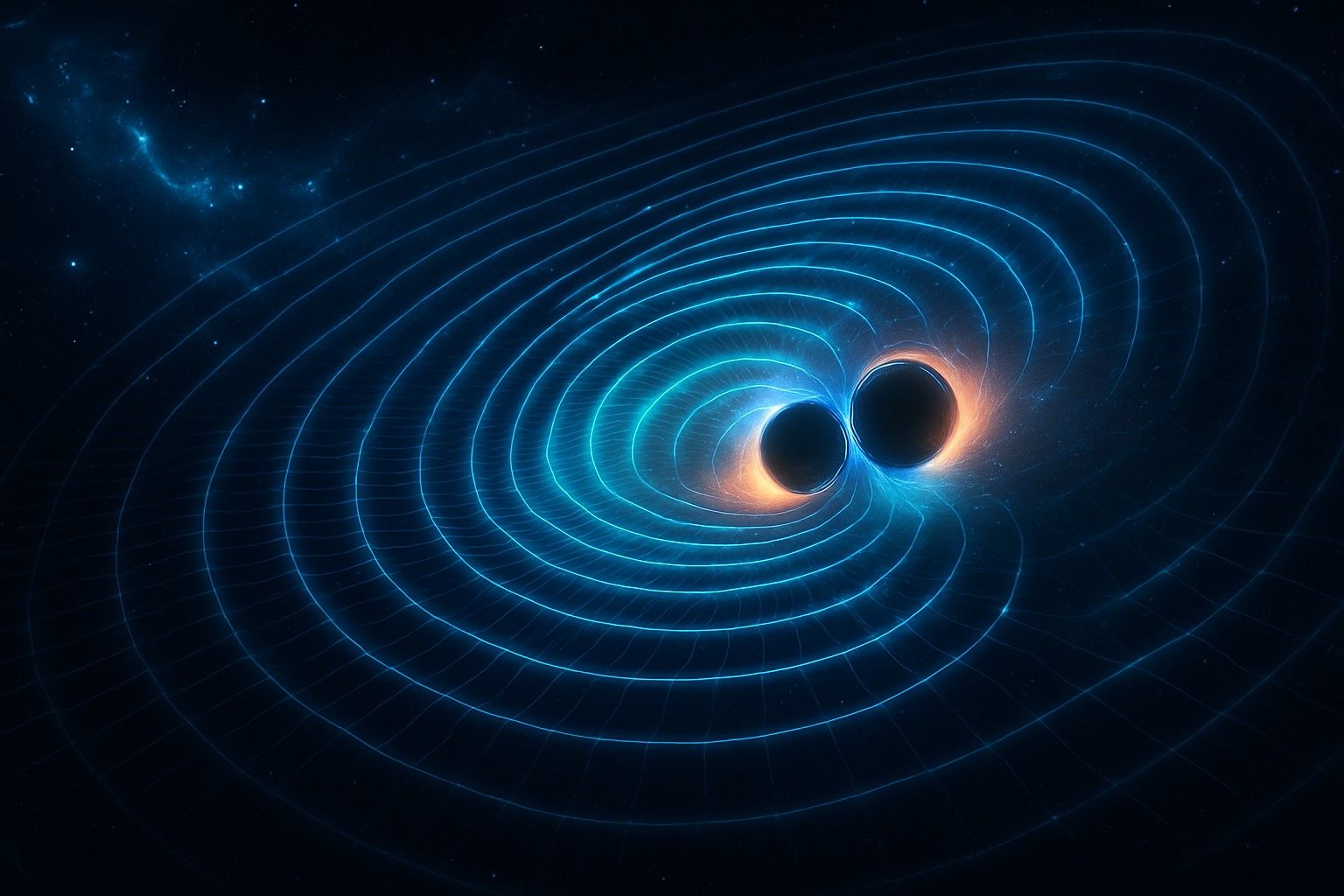In 2015, the world of physics was shaken, literally and figuratively, by the first direct detection of gravitational waves, a century after Albert Einstein predicted their existence. But what exactly are these mysterious ripples, and why do they matter?
What Are Gravitational Waves?
Gravitational waves are ripples in the very fabric of spacetime. They are produced when massive objects accelerate, especially in violent cosmic events like the collision of black holes or neutron stars. These waves travel at the speed of light and carry information about their origin, offering a new way to “see” the universe.
Two-dimensional illustration of how mass in the Universe distorts space-time.
(https://www.ligo.caltech.edu/page/what-are-gw)
Imagine dropping a stone into a calm pond. The ripples that spread out are like gravitational waves, except instead of water, they travel through spacetime itself.
Einstein’s Prediction
In 1916, Einstein’s General Theory of Relativity described gravity not as a force, but as the warping of spacetime by mass and energy. He theorized that massive, accelerating objects should create waves in spacetime, though he doubted they’d ever be detected because of their tiny amplitude.
A neutron star merger and the gravitational waves it creates
(https://imagine.gsfc.nasa.gov/science/toolbox/gwaves1.html#:~:text=One%20way%20to%20describe%20gravitatio nal,space%2Dtime%20is%20very%20deep.&text=To%20take%20the%20analogy%20of,at%20the%20speed%20of %20light.)
The Breakthrough: LIGO’s Discovery
Nearly a hundred years later, in September 2015, the Laser Interferometer Gravitational-Wave Observatory (LIGO) detected the first gravitational wave signal from the merger of two black holes over a billion light-years away. The wave distorted LIGO’s massive interferometers by less than a thousandth of the diameter of a proton, yet it was unmistakable.
This discovery opened a new era of gravitational wave astronomy, enabling scientists to study phenomena invisible to traditional telescopes.
Why Are Gravitational Waves Important?
Gravitational waves provide a new way of observing the universe, complementing electromagnetic observations (light, radio, X-rays, etc.). They allow us to:
⮚ Detect black hole collisions, which emit no light.
⮚ Understand neutron stars, the densest observable matter in the universe.
⮚ Test Einstein’s theories under extreme conditions.
The Future of Gravitational Wave Astronomy
With observatories like LIGO, Virgo (Europe), and KAGRA (Japan) joining forces, and future space-based detectors like LISA (Laser Interferometer Space Antenna) on the horizon, the field is rapidly expanding. Scientists hope to detect more exotic events, such as collisions involving hypothetical primordial black holes or even cosmic strings, theoretical remnants from the early universe.
Conclusion
Gravitational waves are not just a new branch of astronomy, they are a profound validation of Einstein’s genius and a gateway to discoveries we’ve only begun to imagine. As technology advances and our “ears” to the universe become more sensitive, we are likely to witness a revolution in our understanding of space, time, and the cosmos.
– Dr. Rohitash Kumar, Assistant Professor
Department of Physics, Madhav University

